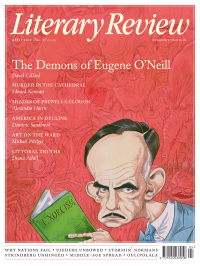Alan Allport
Days of Vengeance
Savage Continent: Europe in the Aftermath of World War II
By Keith Lowe
Viking 460pp £25
The first sight that awaited batches of prisoners arriving at the concentration camp just outside Zgoda, in southwestern Poland, in 1945 was bodies hanging on the high-voltage electric fence. For the new inmates, this was a taste of what they could henceforth expect. They were crammed in their thousands into Zgoda’s lice-ridden barrack blocks, and day-to-day existence was a series of degrading and sometimes lethal torments. Camp routine was organised around their physical and mental degradation. Washing and sanitation facilities were non-existent, food rations meagre and often deliberately withheld. The sick were forced to linger among the general camp population, spreading typhus and other contagious diseases. Prisoners were routinely beaten and tortured. Those attempting to escape were singled out for special treatment: immersion in freezing chest-deep water for hours at a time, and mauling by uniformed thugs wielding rubber truncheons and iron bars. ‘Just shoot me, just shoot me!’ begged one fourteen-year-old, unable to stand the repeated assaults of the guards. Somehow he survived; many did not. At one point, twenty inmates were dying each day. One-third of all those who entered the camp never left.
Most of us today feel that we know this story well. The Holocaust has become central to the public memory of the twentieth century. Auschwitz, Bergen-Belsen and Dachau are familiar names. The spectre of gaunt, hollow-cheeked inmates in their striped prison garb, stumbling towards the gas chambers, is now so

Sign Up to our newsletter
Receive free articles, highlights from the archive, news, details of prizes, and much more.@Lit_Review
Follow Literary Review on Twitter
Twitter Feed
It wasn’t until 1825 that Pepys’s diary became available for the first time. How it was eventually decrypted and published is a story of subterfuge and duplicity.
Kate Loveman tells the tale.
Kate Loveman - Publishing Pepys
Kate Loveman: Publishing Pepys
literaryreview.co.uk
Arthur Christopher Benson was a pillar of the Edwardian establishment. He was supremely well connected. As his newly published diaries reveal, he was also riotously indiscreet.
Piers Brendon compares Benson’s journals to others from the 20th century.
Piers Brendon - Land of Dopes & Tories
Piers Brendon: Land of Dopes & Tories - The Benson Diaries: Selections from the Diary of Arthur Christopher Benson by Eamon Duffy & Ronald Hyam (edd)
literaryreview.co.uk
Of the siblings Gwen and Augustus John, it is Augustus who has commanded most attention from collectors and connoisseurs.
Was he really the finer artist, asks Tanya Harrod, or is it time Gwen emerged from her brother’s shadow?
Tanya Harrod - Cut from the Same Canvas
Tanya Harrod: Cut from the Same Canvas - Artists, Siblings, Visionaries: The Lives and Loves of Gwen and Augustus John by Judith Mackrell
literaryreview.co.uk